Bike tires are one of the most neglected and ignored parts of your bike. It can be a real pain to clean because they tend to get dirty fast and leave behind a lot of grime. Dirt can cause uneven tires to wear, affecting your bike’s performance and handling. Don’t know how to clean bike tires in just a few minutes? When I am here, yes, you have the option to make bike tire washing simpler.
Whether you’re a pro or new to cycling, this guide will help you learn how to clean bike tires in simple steps with some cleaning and maintenance tips.
Photo Credit: IstockphotoWhether you ride your bike to work or pleasure, or just take it out for a spin now and then, before you ride, it’s a good idea to check and clean your bike’s tires. Bike tires need regular cleaning and maintenance like car and motorcycle tires. If you don’t want them to become a nuisance, clean them routinely as per the bike’s need. But before cleaning the bike tires, make sure you get them dirty enough.
Washing the tires every single day isn’t a good thing. So wash them only then when they are filthy. Here is an effective way to clean your bike tires to stay as clean and smooth as possible.
Mtb bikes are designed for mountain biking; in detail, ride over rugged terrains or muddy roads. So it gets dirty very early, or you can say after every ride. Make it a point to clean them after every ride or at least 1-2 times in a week, instead of just once per month. And, if you are already a one-minute man, then just go ahead and start from here in case this might be too hard for you, so let’s get into the details for further information.
Road bikes are flat bike tire bikes designed to ride over flat pavement, so they don’t need to be cleaned earlier. Not only a road bike, any type of bike tires, be it a bicycle tire, electric bike, or any flat tire bike, even the jockey wheel (leaving only the mountain bike tire), won’t get dirty so quickly.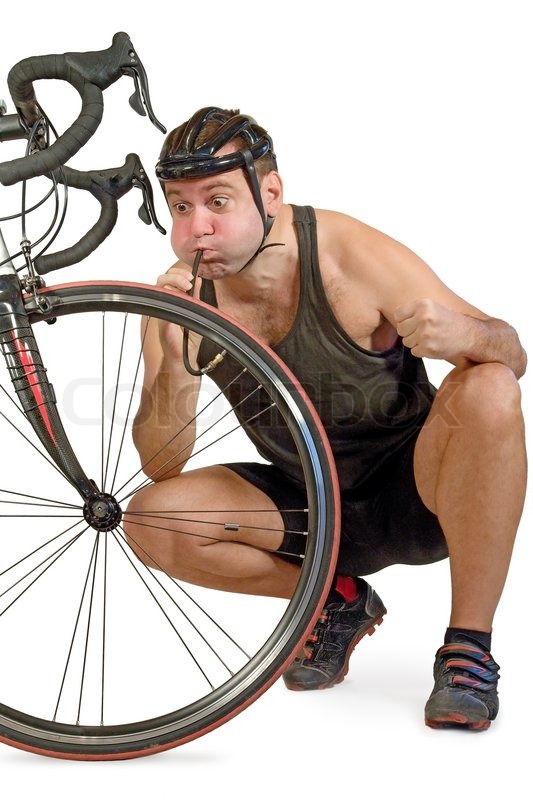 So they don’t need cleaning before a month passes.
So they don’t need cleaning before a month passes.
No matter which bike you win, the cleaning process will be the same; only the cleaning time will change. You just have to clean the mtb bike earlier, like once a week, and other bikes frequently, like once a month. Let’s give a closer look at the cleaning process.
Bucket, Baking Soda, Dish liquid or detergent, vinegar, olive oil/coconut oil/rosemary oil/wintergreen berry oil, hand gloves, bike stand, sponge, clean rag, nylon brush, toothbrush, white vinegar, bleach.
Photo Credit: IstockphotoStep One:
The first step will be standing your bike on a bike stand or park tool. It will make reaching each part of the bike easier. If you don’t have a bike stand, remove all the moving parts and wheels from the bike chain and place them over a clean clothesline.
Start with cleaning the front tires, and then the rear tire. Don’t try to grease both tires at once. Take a high-pressure garden hose to clean the loose grime. But while using a hose, keep in mind you have to avoid using it on places like Headset, bottom brackets, brake pad, hubs, etc. If you don’t have a hose, you can use a big nylon bristle brush to clean it off. Keep in mind the faster you will start the task, the easier it will be. Because with time, the grime will dry and become harder to remove. So do it as fast as possible while they are wet.
Don’t try to grease both tires at once. Take a high-pressure garden hose to clean the loose grime. But while using a hose, keep in mind you have to avoid using it on places like Headset, bottom brackets, brake pad, hubs, etc. If you don’t have a hose, you can use a big nylon bristle brush to clean it off. Keep in mind the faster you will start the task, the easier it will be. Because with time, the grime will dry and become harder to remove. So do it as fast as possible while they are wet.
Step Two:
Making free of dirt isn’t the only purpose of cleaning bike tires. You have to clean them properly to increase their lifespan and make them neat and clean, just like a new bike. To clean the bike, you can make a household cleaner of baking soda and warm water or a cleaning solution of white vinegar and warm water. If you want to avoid making any degreaser, you can buy a car wash or bike cleaner from any bike shop as I love DIY projects, so today, I will share a homemade degreaser recipe with a full cleaning process with you.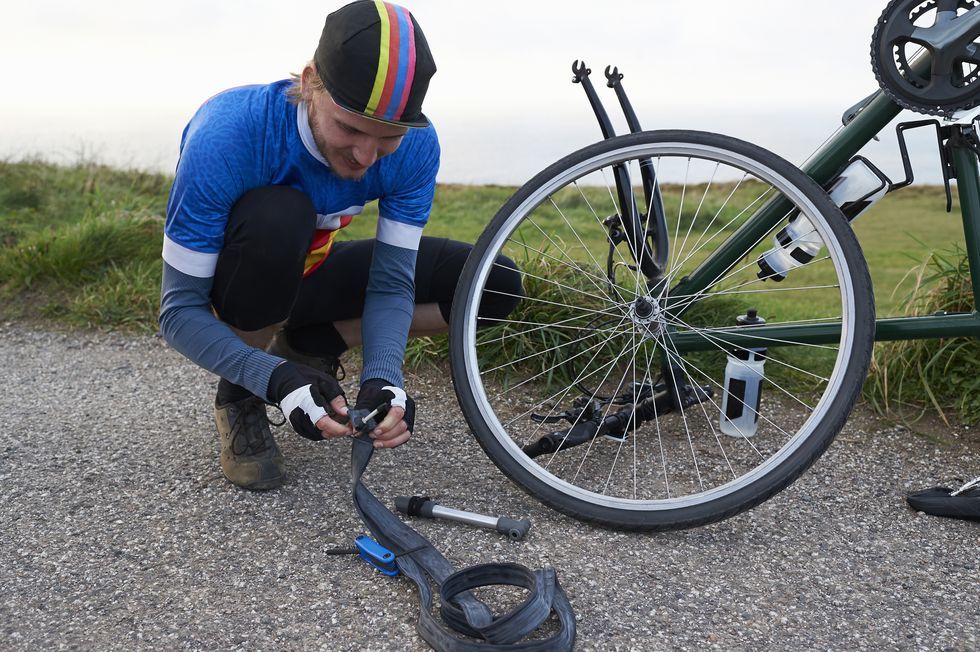
Take a bucket full of warm water and add two cups of baking soda and a few drops of dish liquid or one tablespoon of detergent to make the cleaner for better results. I saw some users adding toothpaste; as they said, toothpaste is an effective way to clean their tires. I didn’t yet try it, but I will be using it soon and sharing how it was.
If you want, you can also avoid using baking soda and only soapy water as a degreaser to do the task. The more bubbles you have in the cleaner, the more effective it will be.
Step Three:
Now, take some solution in a spray bottle and allow the left ones to be in the bucket. Spray the solution all over the rubber tires, especially between the tread and the inner circumference (inner sidewall). Let the solution absorb for five minutes, so the grease becomes wet and easily comes off. It’s time for the final cleaning. Take a big scrubbing brush, not the steel or harsh scrubber, the big soft brush or nylon bristle brush.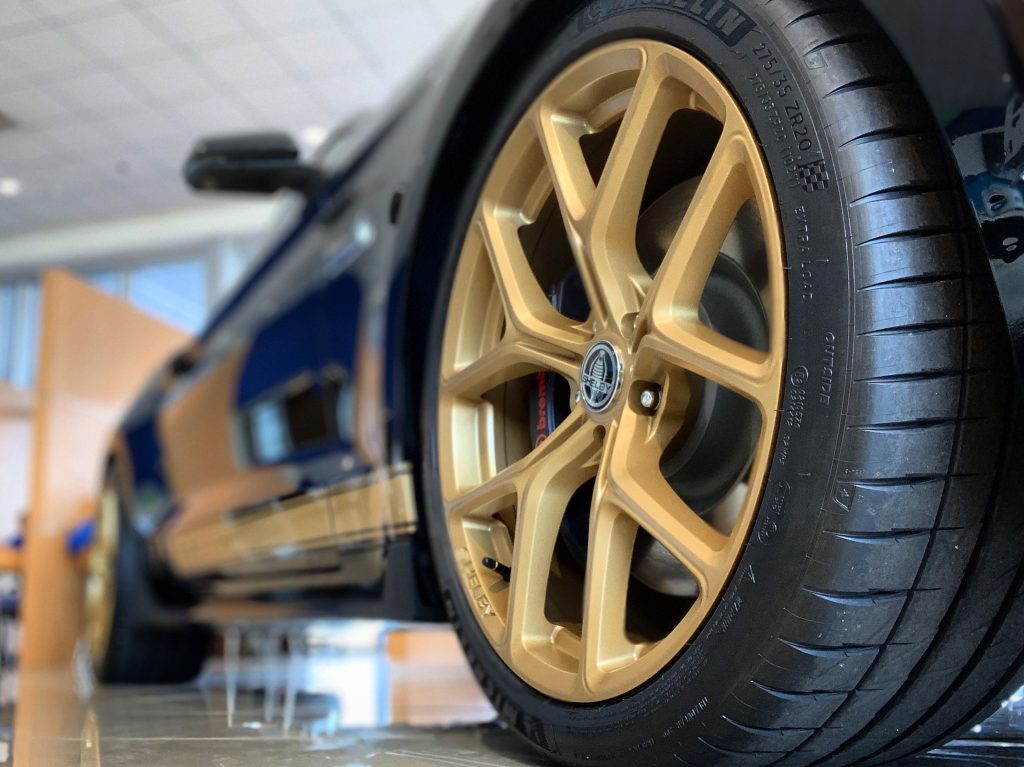 Dip the brush in the solvent and scrub the rubber wheel with it.
Dip the brush in the solvent and scrub the rubber wheel with it.
Start from cleaning the valve, and end after all around the tires, including the spokes, chain, and hub. Here you have to be a little careful, avoid bending the valve, and cover the valve with a dust cap for better protection. It will ensure no dirt or mud inside the valves. To reach each part of the dirty tire, take help from an old toothbrush. A toothbrush will reach the places that are hard to reach and clean. Repeat the same process with the rear wheel.
Step Four:
After scrubbing enough, if you are satisfied and ensure no dirt and debris have been removed, rinse away with warm water. If some dirt is still there, repeat the same process. After removing the grime, wipe off the wheels properly with the help of a damp sponge or rag to neat, clean the tires. Keep doing this until all the tires are thoroughly cleaned. Rinse once again with warm water.
Then use a towel or dry rag and wipe away the bike parts to dry them. Make sure the tires are dry well because if they remain wet for a long time, mold can attack them. Wipe away the sidewalls and rim as well. After the tires are dry, lube them with the chain ring.
Make sure the tires are dry well because if they remain wet for a long time, mold can attack them. Wipe away the sidewalls and rim as well. After the tires are dry, lube them with the chain ring.
Step Five:
Though I am adding it, it’s not a step or part of clean tires. It’s not a degreaser and is optional. You can follow it or not; it depends on you.
Did you hear about rosemary oil or wintergreen berry oil? Or olive oil or coconut oil? Any of the mentioned oil will work to make the tire shine. Take some oil in a rag or towel, and dab the rims and rubber wheel with it. Make sure to grease each rim corner and spins with this towel.
This will ensure the rim becomes shiny and no peeling of paint for a long time. Some also groove using petroleum instead of oil. They find it kinda effective, but I didn’t try yet; if you want, you can give it a chance.
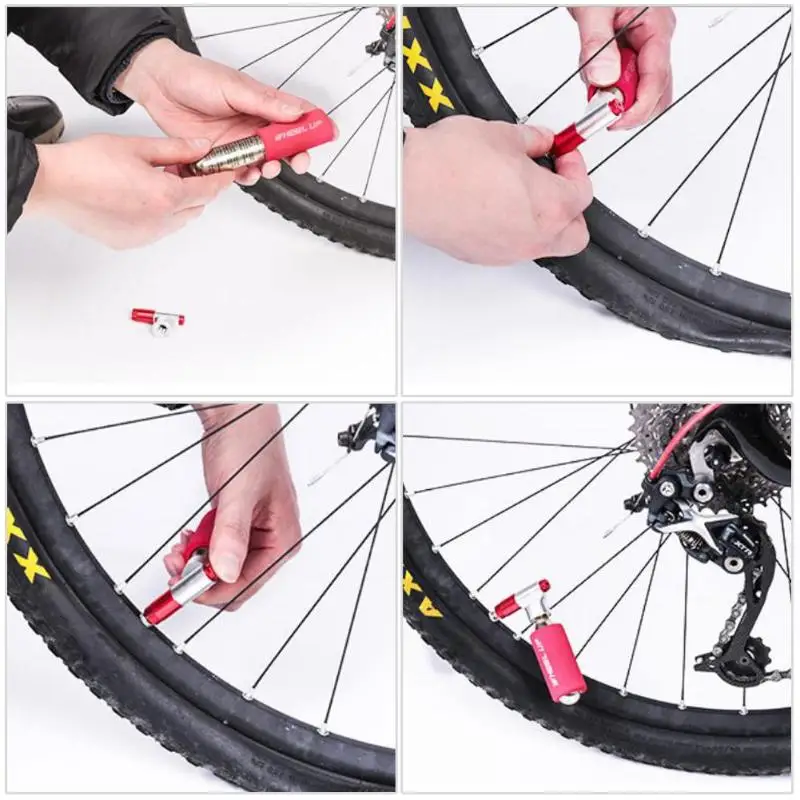
Conclusion
Cleaning bike tires is no longer painful when you know how to do it. I have shared an effective method and divided them into some simple steps so you can follow them easily. My cleaning process on how to clean bike tires is the method mostly I used to clean my bike tires, especially when I want to avoid taking them to a local bike shop for cleaning. This method saves my money along with time. Let me know after trying this method how effective it was.
If your bike tires are black, there is no way to make them white again without painting again. But if they are just dirty, then you can clean them using a mixture of baking soda and water and then rinse with warm water. This cleaning method is enough to clean dirt from your white dirty tires and make them white again.
How do you clean white rubber bike tires?Start by placing the bike upside down and shaking it to remove any loose dirt. Spray a solution of dish soap and water on the tire, let sit for 5 minutes, then rinse with clean water.
Apply baking soda to the tire and scrub with a brush or toothbrush until bubbles appear and it turns white again (this will take about 15 minutes). Rinse off the baking soda with clean water, then dry with a towel before riding your bike again!
How do you clean bike wheels?One of the best ways to clean bike wheels is by using a brush. A simple solution for removing road dirt and grime from your bike wheel rims is a rag soaked in dish soap, then wrung out.
A simple solution for removing road dirt and grime from your bike wheel rims is a rag soaked in dish soap, then wrung out.
Another way to clean your bike wheel rims is by using a spray bottle with water and some mild dish soap. Just spray on the rim and let it sit for a few minutes before wiping off with a dry cloth or paper towel.
Finally, you can use an old toothbrush and mild soap solution to scrub away any stubborn spots that don’t come off with water alone.
How do you clean mountain bike tires?To clean mountain bike tires, you need to use a brush and soap solution.
First, remove the tire from the wheel. Then fill a bucket with cold water and add dish soap (or your favorite detergent) and let it sit for about 10 minutes.
Next, scrub your tires using a bicycle brush or car wash brush, rinsing them off in the bucket of soapy water after each stroke.
After scrubbing thoroughly, rinse your tires in cool water until they are no longer sudsy before mounting them back on the wheel.
Ryan Ford
I am Ryan Ford, a mountain biking enthusiast who loves to explore the outdoors. I also like to go on adventures with friends and anything else that involves being outside. I love my bike because it gets me out of the house and gives me an opportunity to enjoy nature.
By Jim Langley
We’ve talked before about washing bicycles after rainy rides. My advice was to remove the wheels to make the task of washing them easier. However, I didn’t provide complete instructions for cleaning wheels.
Two thoughts made me decide to go into more detail today. First is the fact that wheels have become so much more expensive. So, sort of like wanting to keep the expensive custom rims you might have on your vehicle shiny, you might feel the same way about your bike’s hoops. And, second, there’s actually a lot to cleaning bicycle wheels.
So, in this Tech Talk, let’s take a closer look and learn some tricks. Clean the wheels one part at a time as outlined here.
Clean the wheels one part at a time as outlined here.
Have some cleaning tools on hand, such as a bucket with warm water and a grease-cutting dishwashing detergent like Dawn that makes lots of suds. A soft sponge is perfect for cleaning the non-grimy parts, and round up some rags for cleaning the cassette and drying the various parts.
I also like Park Tool’s GearClean Brush for cassette cleaning. If there are black marks on the sides of the rims from braking, a solvent like acetone will remove them quickly (protect your skin and eyes). Isopropyl alcohol works, too, but requires more scrubbing for those black marks. It can be used as a solvent to degrease parts, too.
CassetteBy cleaning the cassette first, you’ll avoid transferring any grease from it onto your just-cleaned rim, tire and spokes. To dislodge any buildup of grime between the cogs, I use the toothed end of Park’s GearClean brush.
Then, to clean the cassette cogs, I hold the wheel flat with the tire against me on one side and against the wall or workbench on the other.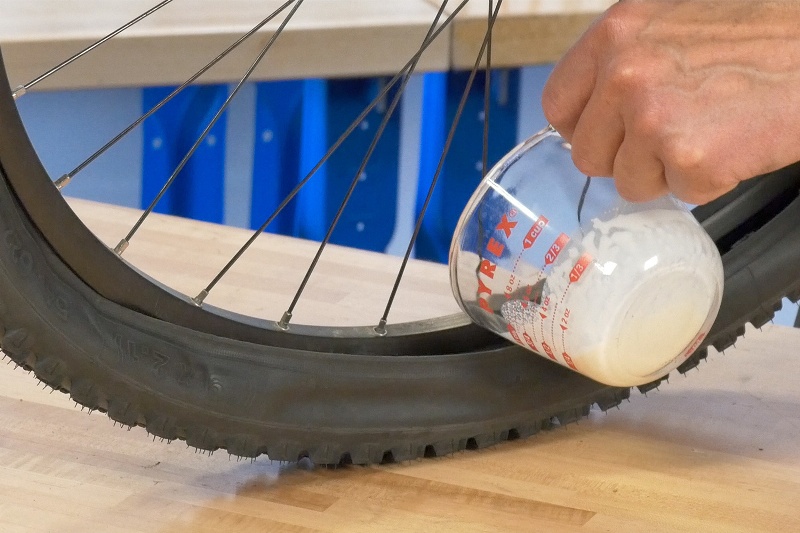 This puts the cassette facing up and allows me to hold the wheel with my body, leaving my hands free. Lean into the wheel to maintain constant pressure or you’ll drop it.
This puts the cassette facing up and allows me to hold the wheel with my body, leaving my hands free. Lean into the wheel to maintain constant pressure or you’ll drop it.
I then hold a rag with both hands and, using a shoe-shine motion, slip the edge of the rag between each two cogs and “floss,” going back and forth with the rag until every cog is clean.
If the cogs are more dirty, use a little solvent on the rag, like the alcohol. You can also use the brush on the Park tool (or an old toothbrush) to clean the cogs before wiping. Just try not to let the brush fling grease and grime all over the rest of the wheel, or it’ll make more of a mess to clean.
It takes a little practice using a brush and rags like this to clean the cassette, but you can get pretty quick at the technique, and it does a nice job.
An alternative is to remove the cassette so that you can work on the cassette broken down into individual and grouped cogs. That requires cassette removal tools and takes longer.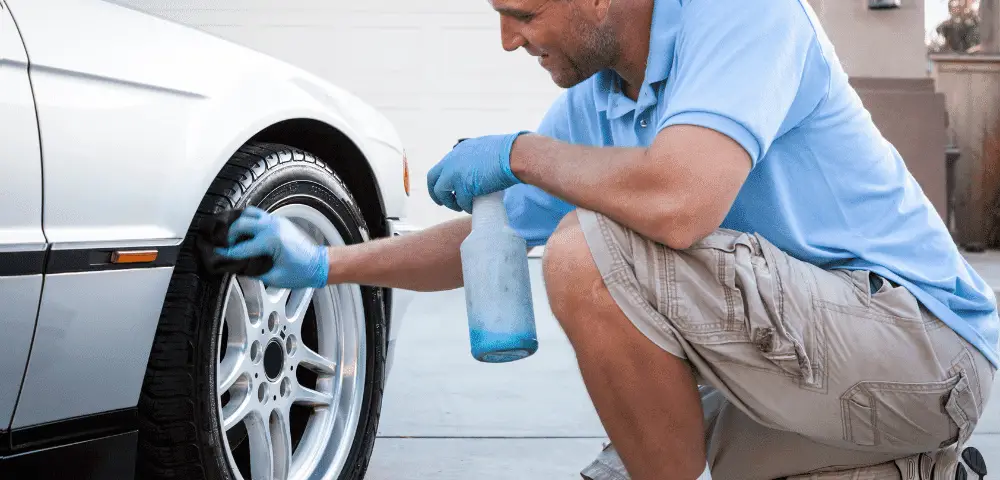 But it makes it easy to clean the hub that’s otherwise hiding behind the largest cassette cog.
But it makes it easy to clean the hub that’s otherwise hiding behind the largest cassette cog.
Once the cassette’s shiny and clean again, focus on the hubs. Start by cleaning the ends of the axles, since that’s where you may find some grease and grime that will spread if you don’t clean it off. Wiping with a rag will usually take care of it quickly. Or, if it’s got some crud built up, go at it with the brush first to get in the tight spots and then wipe clean with the rag.
Then for the hubs, scrunch up the sponge to fit it in between the spokes to clean the centers of the hubs and around the spoke holes. Just move the sponge around the hub and push it so it gets next to the spoke bends and heads. Then use it to clean the outside of the hub and spoke holes there, too.
With disc brake bikes you’ll want to clean the rotor and behind it, too. And, once clean, be sure to inspect it for signs of wear. Your braking depends on rotors in good condition.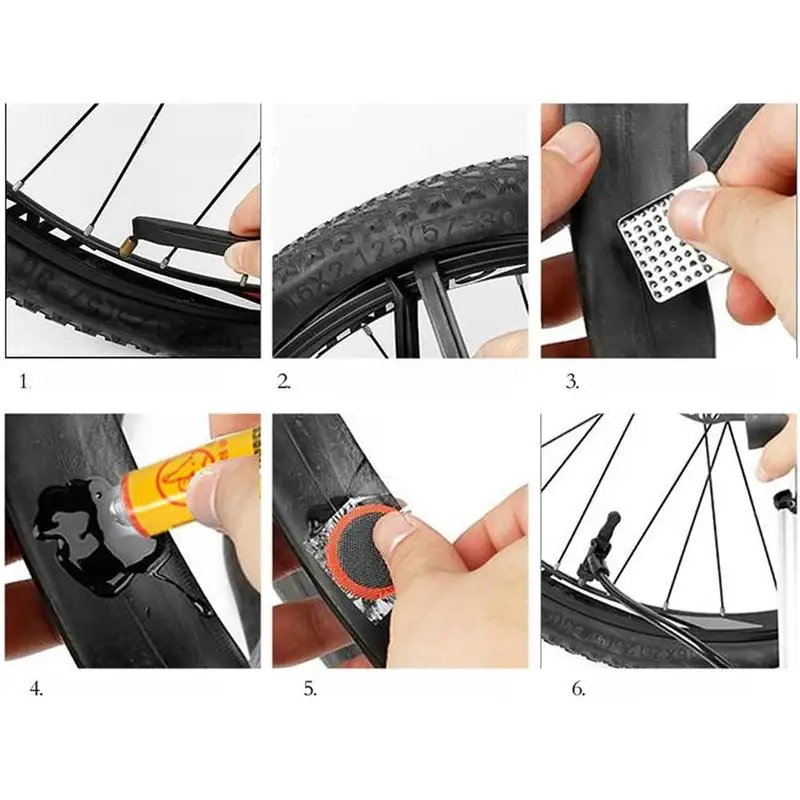 If you see deep grooves or noticeable thinning, it may be time for a new rotor.
If you see deep grooves or noticeable thinning, it may be time for a new rotor.
Quality wheels use stainless-steel spokes, which won’t rust. But they will still pick up dirt, dust and grime from the chain lube. Wipe them down with the sponge and soapy water. Note that spokes have more than one surface. Spokes usually cross other spokes, too. For these reasons, take your time to ensure you’ve cleaned all surfaces of each spoke.
Keep going up to the rim, and clean the spoke nipples, too. Dirt collects around the nipples and it doesn’t always clean off when washing the rims.
Tip: After cleaning the spokes, you can prevent future ticking sounds by placing a small drop of Tri-Flow at each spoke cross and then squeezing the spokes to allow the lube to get in-between the spokes. Wipe off any excess lube and be sure not to drip any lube on anything else.
Rims and TiresUsing the sponge and soapy water, thoroughly clean the bottom and sides of the rims and the tires, too.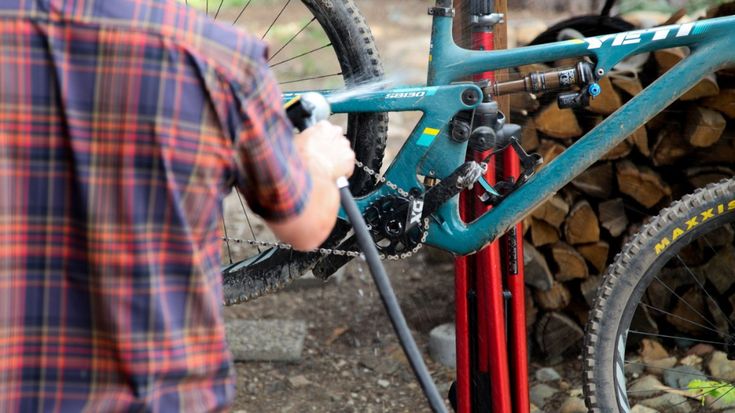 I clean the rims working from the side of the wheel, pushing the sponge in between the spokes and cleaning each section all around the wheel. Then I go back and hold the wheel while running the sponge around the rim on both sides. This cleans all surfaces of the rim.
I clean the rims working from the side of the wheel, pushing the sponge in between the spokes and cleaning each section all around the wheel. Then I go back and hold the wheel while running the sponge around the rim on both sides. This cleans all surfaces of the rim.
Clean the tires with the sponge by pulling it around the wheel a few times making sure to get the top (tread) and sides (sidewalls).
Tip: One of the best reasons to clean the rims and tires is that it makes it easier to see if anything’s wearing out. Take time to look at every spoke nipple where it meets the rim for any evidence of rim cracking, a sign that it’s time for a new rim.
Also, if you have rim brakes, check the sides of the rims for wear. If the rim has a deep groove in the braking track, it’s probably time to replace the rim. And look at the tire tread and sidewalls for signs of baldness, casing showing through or sidewall failures like stone damage — and replace them if needed, too.
Now, enjoy looking down at those beautiful wheels on your next ride. And keep in mind that now that you know how, you can clean your wheels again in a jiffy anytime you want, even if you’re not washing the rest of your bike.
Next Article: Mild Dehydration Does Not Impair Exercise
Your bike looks much better when it's clean, and its mechanisms run smoother and last longer. This will save money in the long run, and a clean bike ride will be much more enjoyable.
It is very important to clean your bike after a muddy or wet ride. But cleaning after driving on a dry and dusty road is no less important.
For this we need:

First clean the chain. If you have a chain cleaner, use it. If not, then you need to apply a degreaser and use a brush.
You can read more about bike chain maintenance in the section Bike chain cleaners and brushes.
Do not use the same brush to clean other parts or mechanisms. Especially for cleaning disc brake rotors and rims - fouling the brakes with dirt from the chain will reduce their performance and may even lead to brake pad replacement.
Clean the front and rear sprockets. To remove stubborn dirt in hard-to-reach places, there are special brushes with a hook.
No matter how carefully you clean the chain, there is always a chance that dirt will get on the rotor or rim. And this can cause problems with disc or rim brakes.
Apply degreaser to a clean paper towel and wipe the rotors and rims.
You can gently use a hose or wet the bike with a bucket and a sponge and then wash off the accumulated dirt.
Spray the detergent onto the frame tubes and the most soiled areas.
Use a soft brush to clean the entire bike.
Pay attention to moving parts and use a smaller brush to get into tighter spaces, sometimes an old toothbrush can be very helpful.
Rinse bike with water. Spin each wheel to completely wash off all detergent from the tread.
Check that all dirt has been removed.
Wipe the bike dry with a towel.
You can also polish your bike with a special spray and a soft cloth to reduce the amount of dirt that will stick to it the next time you ride.
To lubricate the chain, rotate the cranks in the opposite direction and apply even drops of lubricant to the moving chain. If spray chain lube is used, be sure to cover the disc brake rotor and rim with a rag.
Let the grease soak in and be sure to wipe off any excess with a dry cloth.
Done, the bike is clean!
Bicycle, like any vehicle, has its own life, its elements wear out and become unusable. In order to extend this period as much as possible, you need to monitor your two-wheeled friend and change worn parts in time.
The main parts subject to wear are: tyres, wheel and carriage bearings, brakes and transmission (chain, rear and front sprockets). Here we will teach you how to care for them properly.
In order for tires to last, you just need to ride on the surfaces they are designed for. Try to avoid braking by fully locking the wheel on hard surfaces.
The first rule is to change your brake pads on time. How do you know when it's time to put in new ones? The bike has a “wear line” indicator - a wear line for the pads.
Second, watch the brake cable tension or brake fluid pressure.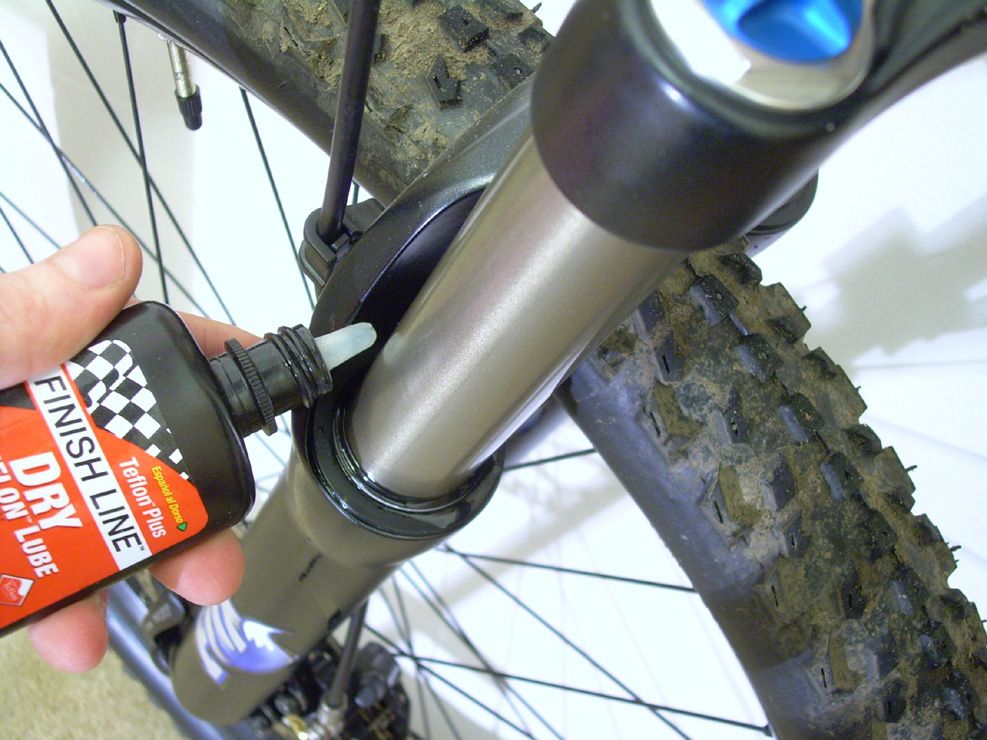 The brake lever should always block the wheel when fully depressed. If this does not happen, contact the workshop.
The brake lever should always block the wheel when fully depressed. If this does not happen, contact the workshop.
Before using the bike, check for free play in the wheels - try to rock the wheel from side to side, perpendicular to the bike. If you feel even a slight free play, you must urgently eliminate it, otherwise the wheel will become unusable. Contact the master or sort out the sleeve yourself.
Transmission is a set of mechanisms that connect the pedals to the wheels. Its main elements are a chain, rear and front sprockets (or cassettes). The transmission is subject to the greatest wear when used in mud, water and without lubrication, so it is very important to clean and lubricate the chain in time.
Clean the transmission as soon as you notice dirt. Run your finger along the chain - if it is dirty, then it's time for cleaning.
Lubricate the chain every 100 km, or every day if you ride on wet or rainy surfaces, or once every two weeks if the bike is hardly used. See below for how to clean and lubricate.
Bike cleaning takes five to ten minutes. Before you begin, prepare everything you need: a bike rack, a bucket of water, two sponges (one for the frame and wheels, the other for the transmission), a degreaser, a transmission cleaning brush, and a bicycle chain scraper.
Attention! Do not wash the transmission with a pressure washer! High water pressure will break through the bearing protection and wash out the grease, which will only lead to more wear.
Ready? Place the bike on the rack. If there is none, you can put it on the steering wheel and seat with the wheels up. Be sure to put something under the seat and grips so as not to damage them.
Use a sponge, water and bicycle cleaner or foam to remove dirt from the frame, wheels and brakes. Treat the brake pads with a degreaser especially carefully.
Treat the brake pads with a degreaser especially carefully.
Shift gears to the end position. Use a transmission cleaning brush to remove any coarse dirt from the front and rear sprockets.
Now soak a sponge in the degreaser and clean the grease off the sprockets.
Attach the scraper to the bike chain, fill it with gasoline or degreaser and start pedaling counterclockwise. Change the gasoline or degreaser in the scraper two or three times until the chain is completely clean.
If you do not have a chain scraper, you can use ALL in ONE spray or WD-40 Penetrating Lubricant to remove dirt. After this cleaning step, be sure to go over the chain with a sponge to remove any remaining dirt.
Lubrication of the chain takes about two minutes. To lubricate the chain, you will need a rack, liquid bike oil in an oil can, paper or a cleaning cloth.
Attention! Lubricate only a clean chain! Otherwise, oil with dirt turns into an abrasive - a grinding mixture - and greatly increases the degree of wear.